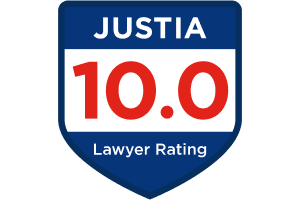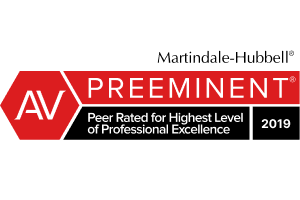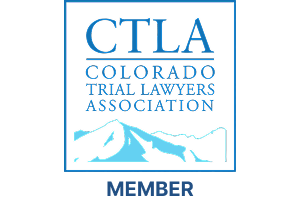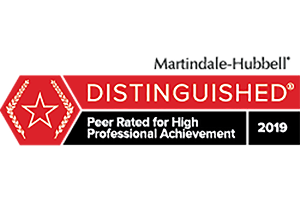Cargo Spill Accidents
Cargo spill truck crashes are uniquely dangerous. When freight shifts, breaks loose, or spills onto the roadway, the consequences can be immediate and far reaching. A single pallet can topple a small car. A ripped curtain-side trailer can drop debris across several lanes. A tanker valve failure can send liquid sweeping under tires like black ice.
At Cook Bradford & Levy, led by trial lawyers Jason Levy and Brian Bradford, we treat cargo spill cases as a race against time. Evidence disappears quickly. Drivers move on. Trailers are repaired. Bills of lading go missing. We move fast to preserve the truth, we assemble the right experts, and we prepare every case as if a jury will decide it.
Why Cargo Spills Happen
Cargo spills almost never occur because of one small mistake. They are usually the last link in a chain of problems. A hurried shipper loads too high and too far to the rear. A carrier skips a weight check. A driver forgets to recheck tie downs after the first fifty miles. Brake imbalance or hard steering sets up a quick sway. A worn strap snaps. The trailer yawns open and the load escapes. The physics are simple. The countermeasures are well known. When the industry fails to use them, people on Colorado roads pay the price.
The legal duties that prevent spills
Two sets of rules matter most in cargo spill litigation. The first is the Federal Motor Carrier Safety Regulations on cargo securement. Part 392.9 requires a commercial driver to be satisfied that the cargo is properly distributed and adequately secured before driving, and to reexamine the load within the first fifty miles and periodically thereafter. Part 393.100 through 393.136 lays out specific securement performance requirements and methods for a wide range of cargo, from coils, logs, and paper rolls to heavy machinery and automobiles. These standards are not aspirational. They are the baseline for safe operation.
When the cargo is hazardous, another body of federal law applies. The Hazardous Materials Transportation Act and its rules in Parts 171 through 180 require classification, packaging, marking, securement, and emergency response information for materials that pose heightened risks. A company that carries corrosives, flammables, or toxics has a duty to make sure containers, closures, and valves can survive foreseeable transportation forces. A valve leak or an unsecured tote in a crash scene is more than an inconvenience. It can be a life threatening event for crash victims, first responders, and everyone who shares the road.
Colorado adds a layer of straightforward roadway rules. Drivers must prevent dropping or throwing harmful materials on the highway and must cover or secure loads so that debris does not escape. Violating safety statutes and regulations can support negligence per se when the law was designed to protect the public and the violation causes the kind of harm the law was intended to prevent. That principle gives juries a concrete yardstick in cargo spill cases.
Case Law That Shapes Responsibility
Three pillars of case law often guide cargo spill litigation.
First is the Savage rule. In United States v. Savage Truck Line, Inc., the Fourth Circuit recognized that the carrier and its driver bear primary responsibility for safe loading and securement. The shipper can be responsible when it assumes the loading task and the defect is latent, meaning the carrier could not detect it by ordinary observation. Courts across the country continue to apply this logic. In practice, this means a trucking company cannot point to a shipper when obvious securement problems existed. At the same time, a shipper that undertook loading and created a hidden hazard cannot hide behind the carrier.
Second is negligent selection of unsafe carriers. In Schramm v. Foster, a federal court held that a freight broker may owe a duty to use reasonable care in selecting motor carriers. When a broker funnels freight to a carrier with a poor safety record and a crash follows, plaintiffs may pursue claims that fit the facts, including negligent selection. The principle reaches beyond brokers. Shippers that knowingly use unsafe carriers after clear safety warnings can face similar claims in appropriate cases.
Third is responsibility beyond the driver. In Puckrein v. ATI Transport, the New Jersey Supreme Court allowed claims against a shipper that used an unfit carrier, illustrating that liability can extend upstream when companies put unsafe trucks on the highway. Cargo spill cases frequently involve many players. The driver who failed to recheck a load. The carrier whose maintenance program was paper thin. The shipper who loaded unstable pallets. The broker who ignored safety data while chasing a low rate. The law is flexible enough to reach each one, provided the facts support the claim.
None of these cases replaces Colorado law on negligence, causation, and damages. They provide a framework that helps juries understand who owed what duty and why. The takeaway is simple. Responsibility follows control. Whoever had the power to prevent a hazard and failed to use it can be held to account.
How Cargo Spills Hurt People
Cargo spills produce a different injury profile than typical car crashes. Debris impacts cause puncture wounds, fractures, and penetrating trauma. Rollovers that begin with a shifting load inflict crush injuries and head trauma. Hazardous liquid spills can cause chemical burns, inhalation injury, or secondary crashes when the liquid reduces friction to near zero. In a nighttime spill, poor conspicuity compounds the danger. Drivers arrive at highway speed and meet a dark, irregular obstacle field. The human body and even modern safety systems are not built for that scenario.
Frequent Defense Themes and The Answers The Evidence Provides
Defendants in cargo spill cases often say the driver had no way to know a shipper loaded the freight poorly. The Savage rule cuts both ways. Carriers and drivers have the primary duty to deliver a safe load unless a defect is truly hidden and not discoverable by ordinary observation. If the driver never rechecked securement in the first fifty miles, or if photos show obvious overstacking, the defense loses force.
Another theme is that a sudden emergency forced hard braking that no securement plan could survive. Real world data usually tells a fuller story. Telematics can show speed too fast for conditions, following distance warnings, or earlier hard braking events that should have prompted more conservative driving. If a company sends drivers through steep grades or high crosswinds with just in time schedules, the emergency may be a predictable result of corporate choices, not an act of fate.
In hazmat cases, companies sometimes claim that a small leak was harmless or that the response overreacted. Safety rules require container integrity and proper closures for a reason. A liquid that reduces friction can create a multi car pileup in seconds. A corrosive or toxic mist can cause silent harm. Objective measurements from first responders and photographs of damaged valves and gaskets cut through minimization.
Finally, defendants may argue that a third party in a small car caused the crash by a lane change or brake tap. Even when a cut off occurs, cargo must be secure enough to withstand normal emergency maneuvers. If securement failed under a moderate deceleration or modest swerve, the defense circles back to the choices made before the truck ever left the dock.
Damages In Cargo Spill Crashes
The losses in these cases are often complex. Medical bills begin in the emergency department and can continue through surgery, rehabilitation, and long term care. Time away from work becomes lost wages and diminished future earnings, especially when the injuries involve permanent limitations. Families shoulder caregiving that has both a financial and human cost. In fatal cases, wrongful death damages include funeral expenses, lost financial support, and the loss of guidance and companionship. Colorado law also recognizes noneconomic harm such as pain, suffering, inconvenience, and loss of enjoyment of life. Where the evidence supports it, exemplary damages may be available for willful and wanton conduct. Presenting these categories credibly requires careful documentation and expert support. We work with treating physicians, life care planners, vocational experts, and economists so the record is complete and persuasive.
Steps To Take After a Cargo Spill Crash
Your first priority is safety and medical care. Once immediate needs are addressed, consider the following practical steps.
Keep copies of discharge summaries, imaging, prescriptions, and follow up instructions. If someone you trust can safely do so, photograph vehicle damage, cargo on the roadway, skid marks, and any markings or labels on the truck or freight. Save clothing and personal items that show chemical staining or contact, and store them in sealed bags. Do not speak with insurance adjusters before you understand your rights. Contact counsel quickly so the truck, trailer, and cargo can be preserved for inspection and so electronic data and videos can be secured before they are overwritten.
Frequently asked questions
Who is responsible when cargo spills?
Responsibility follows control. Drivers and carriers have primary duties to inspect and secure. Shippers and loaders can be responsible if they undertook loading and created hazards that were not discoverable by ordinary observation, or if they specified unsafe load patterns. Brokers and shippers may be liable for negligent selection when they use carriers with poor safety records. Each case turns on the facts and documents that show who did what and when.
What if the shipper loaded the trailer?
If the defect was latent, the shipper can share responsibility. If the defect was obvious, the carrier and driver remain primarily responsible. Bills of lading, loading instructions, and dock witness statements help determine who controlled the process and whether the driver had a fair opportunity to see and correct the issue.
Do hazardous materials change the rules?
Hazardous materials introduce additional duties relating to packaging, closures, securement, placarding, and emergency information. A company that carries hazmat must meet those requirements in addition to the general cargo securement rules. Breaches can increase both the risk of injury and the scope of liability.
How quickly do I need to act?
Fast. Trucks are repaired or salvaged. Cameras overwrite. Electronic data can be lost. Courts can issue preservation orders, but only if someone asks. Early action protects both the truth and your rights.
What evidence matters most?
Photos of the load and the securement devices, driver inspection reports, bills of lading, weight tickets, telematics and ELD data, dash and traffic camera footage, and the physical condition of the trailer and securement equipment. The sooner these items are collected, the clearer the picture becomes.
After a Cargo Spill Truck Crash, You Deserve Answers, Support, And Justice, We’ll Fight For All Three
Cargo spill cases demand a blend of speed, engineering fluency, and courtroom readiness. Our firm is built for that work. We secure the vehicles and the load quickly. We gather the right experts for the exact cargo involved. We translate technical standards into plain language that resonates with juries. We prepare every case for trial, which makes negotiations more serious and outcomes more durable. We represent people, not insurance companies, and we keep clients informed at every step.
If you or a loved one was hurt in a cargo spill crash, call us for a free consultation. We will listen, investigate, and build the strongest possible case for accountability and full compensation.
Cargo does not fall off safe trucks. When it does, there is a reason. The law supplies clear duties. The documents and physical evidence reveal who had control. The science explains how the failure occurred. Our job is to bring those pieces together. At Cook Bradford & Levy, guided by Jason Levy and Brian Bradford, we combine fast action with careful analysis. We stand ready to hold every responsible party accountable and to pursue the full measure of justice for Colorado families harmed by preventable cargo spills.









